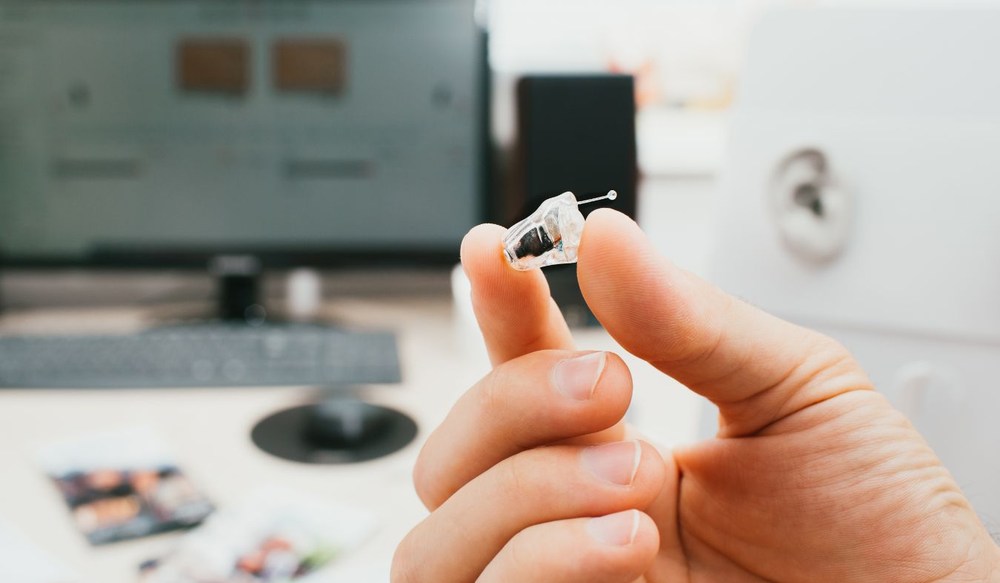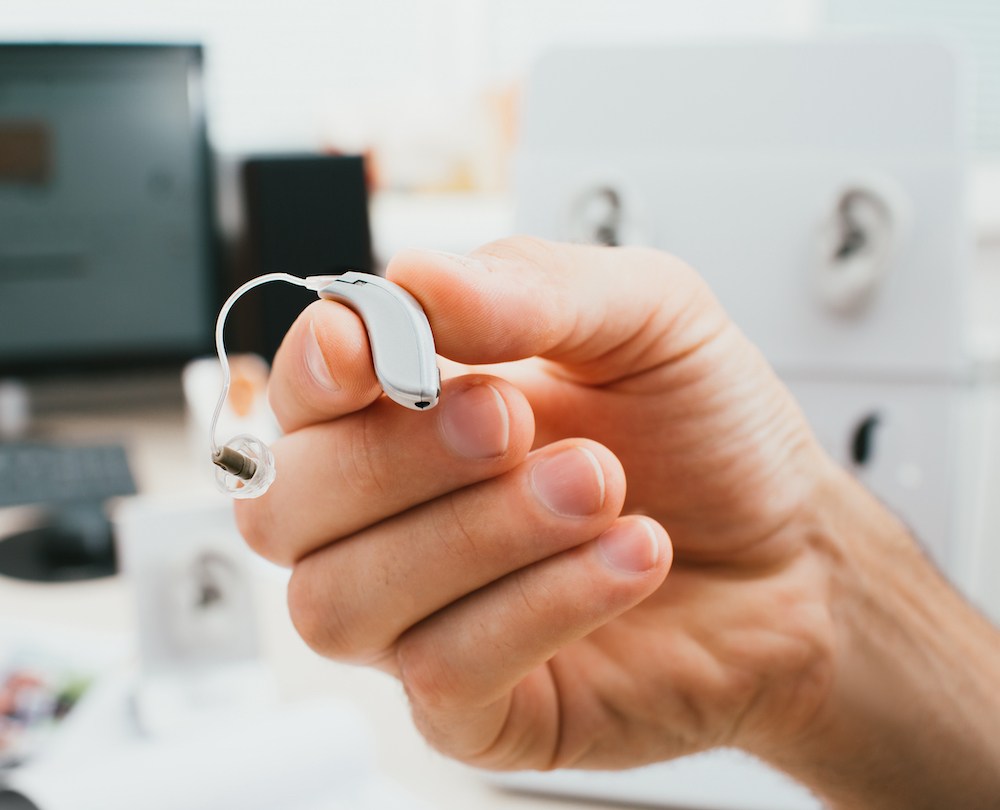Understanding Hearing Aid Feedback: Causes and Solutions
That annoying whistling or squealing sound from your hearing aids can turn
We value our patients and want everyone to be safe. We will be happy to see any patient that is in need of our service. Service is our #1 priority!

By: admin | October 20, 2025
That annoying whistling or squealing sound from your hearing aids can turn a simple conversation into an embarrassing situation. You might be talking with your grandkids, sitting in a meeting at work or trying to enjoy dinner with friends when suddenly your hearing aids start making noise that everyone around you can hear. Feedback happens to most hearing aid wearers at some point, and it’s one of the most common complaints people have about their devices. The frustration isn’t just about the sound itself, it’s about how it interrupts your ability to communicate and makes you self-conscious about wearing hearing aids in the first place.
The good news is that hearing aid feedback usually has a fixable cause, whether it’s related to how your devices fit, how they’re programmed or simple issues like earwax buildup. Understanding why feedback happens helps you address it quickly instead of just tolerating the problem or avoiding situations where it tends to occur. Most feedback issues can be resolved with adjustments from your hearing care provider or simple changes to how you wear and maintain your hearing aids. Getting feedback under control means you can use your hearing aids comfortably throughout the day without constantly worrying about when that high-pitched squeal might start up again.
Hearing aids are small devices made up of a few key parts that work together to make sounds easier to hear. A microphone picks up sound from the environment and turns it into a digital signal. That signal is then processed by a tiny computer chip inside the hearing aid, which adjusts the sound based on the settings chosen for the wearer’s specific hearing needs. After processing, the sound is sent to the receiver, or speaker, which delivers it into the ear canal. A battery powers the entire system, and most hearing aids also include additional components like amplifiers and filters to help improve sound quality.
The way this process works is simple but effective. When sound enters the microphone, it is converted and processed almost instantly, so the wearer hears the adjusted sound in real time. The processor can make soft sounds easier to hear while reducing the intensity of loud noises, creating a more balanced listening experience. The receiver then produces the modified sound clearly into the ear, helping the listener better follow conversations and environmental sounds. This seamless cycle of capturing, processing and delivering sound is what allows hearing aids to provide reliable support for daily hearing needs.
Sound from a hearing aid’s speaker can sometimes escape and get picked back up by the device’s microphone, creating a loop that results in the familiar whistling or squealing many hearing aid wearers recognize. This feedback can happen in a variety of situations, like when the hearing aid doesn’t fit perfectly in the ear, when earwax partially blocks the device or when certain positions cause the microphone and speaker to interact in unintended ways. While it may seem like a minor annoyance, repeated feedback can make listening uncomfortable and distracting, making it harder to focus on conversations or daily activities.
The whistling sounds can draw unwanted attention in quiet settings like libraries or meetings, making you feel self conscious about wearing your devices. Feedback also reduces the clarity of speech and other important sounds you want to hear, since the whistling noise competes with and masks these sounds. Some people even turn down their hearing aid volume to stop the feedback, which defeats the purpose of wearing the devices in the first place.
Your hearing aid creates feedback when sound from the speaker gets picked up by the microphone, producing those whistling or squealing sounds. The most common cause is when your hearing aid doesn’t fit properly in your ear canal. Even small gaps let sound escape and travel back to the microphone. Earwax buildup frequently causes feedback too because wax blocks your ear canal and bounces sound back toward the hearing aid instead of letting it travel deeper into your ear.
Your hearing aids may also create feedback when the volume is set higher than necessary for your specific hearing needs. Sometimes feedback occurs because internal components have become loose or damaged after months or years of use. Even everyday activities like wearing a hat or holding a phone close to your ear can redirect sound waves back into the hearing aid microphone and cause that familiar whistling sound.
Not all hearing aid feedback sounds the same. Recognizing the different types can help you describe the problem accurately to your hearing specialist. The high pitched whistle is the most common type and usually happens when you cup your hand near your ear or hug someone. A lower pitched humming or buzzing feedback often occurs when your hearing aid sits too loose in your ear or when the earmold has shrunk over time.
Some people experience intermittent chirping sounds that come and go throughout the day, especially when chewing or talking. This type of feedback typically means your jaw movements are changing the shape of your ear canal and creating temporary gaps around the hearing aid. Static or crackling feedback sounds different from whistling and usually points to moisture damage or a problem with the hearing aid’s internal electronics rather than a fit issue.
You might also notice feedback that only happens in certain environments, like when you’re in a car or a small room with hard surfaces. These spaces create echo effects that bounce sound waves back to your hearing aid more easily than open areas do. Understanding which type of feedback you’re experiencing helps our team find the right solution faster and get you back to comfortable, clear hearing.
Acoustic feedback sounds like a high pitched whistle that happens when you hug someone or put your hand near your ear, though this type usually stops when you move away from whatever is causing it. Continuous feedback that persists may indicate your hearing aid needs adjustment or repair by our hearing specialists. You might notice feedback only when chewing or talking because jaw movement changes the shape of your ear canal slightly and affects how your hearing aid fits.
Some people experience feedback mainly in the morning when first putting in their hearing aids because ears can change shape slightly while sleeping. Overnight swelling or subtle shifts in ear canal shape can create tiny gaps around the hearing aid, allowing sound to leak back into the microphone and produce feedback. This can make the first few minutes of wearing the devices feel frustrating, even though the fit settles after a short time.
Wind can also create its own type of feedback when you spend time outside on breezy days. This kind of feedback often sounds like rushing air or a light static rather than the sharp whistle of acoustic feedback. The way wind interacts with the microphone and speaker can vary depending on its direction, speed and even your head position, so the noise may come and go rather than remain constant. Understanding these differences helps your hearing specialist identify what’s causing the feedback and gives you a better idea of when it might occur. Other environmental factors, like small rooms with hard surfaces or spaces that create echoes, can also amplify sound waves back into your hearing aids.
Getting rid of feedback starts with simple daily habits. Make sure your hearing aids are clean and properly positioned in your ears each morning. You can prevent most whistling sounds by checking that nothing blocks your ear canal, keeping the volume at recommended levels and avoiding covering your ears with hands or clothing whenever possible.
Check that your hearing aids are inserted correctly and fully seated in your ears each time you put them on, as proper placement prevents most feedback issues. Clean your hearing aids daily with a soft cloth or brush to remove wax or debris that might block the sound outlet and cause whistling. Have your ears checked for wax buildup every three to six months and get them professionally cleaned when necessary to maintain clear sound pathways.
When you notice feedback during phone calls, try holding the phone slightly away from your ear or switching to speaker mode for better results. Regular appointments with our hearing specialists allow us to check and adjust your hearing aids before feedback becomes a persistent problem. Our team can reprogram your devices or adjust the physical fit to eliminate ongoing feedback, and many newer hearing aids have built in feedback management systems that we can activate or fine tune for your specific needs.
Simple daily habits like cleaning your hearing aids each morning and checking that they sit properly in your ears can prevent most whistling problems before they start. When you remove wax buildup from both your devices and your ears regularly, sound travels clearly without bouncing back to create that annoying squeal. The benefits of following these preventive steps include clearer conversations, more comfortable phone calls and the confidence to wear your hearing aids in any social setting without worrying about sudden whistling sounds.
While occasional whistling or squealing from your hearing aids can happen, persistent or frequent feedback is a sign that it’s time to consult a specialist. If you find that feedback happens every time you put your hearing aids in, during phone calls or in everyday environments, it may indicate an issue with fit, earwax buildup or internal device components. Consistent feedback can make listening uncomfortable, reduce the clarity of speech and even lead you to turn down your volume, which defeats the purpose of wearing the devices. Reaching out early allows a specialist to identify the cause before it becomes more disruptive to your daily life.
You should also see a specialist if feedback occurs in specific situations or environments that weren’t a problem before. For example, if wind, wearing a hat or talking on the phone suddenly triggers whistling, or if feedback is louder or more frequent than usual, it may suggest changes in your ear canal, earmold or device performance. Regular check-ins with a hearing professional ensure your devices are working as intended and that adjustments can be made to maintain clear, comfortable sound. Even minor or intermittent feedback is worth discussing, as catching small issues early often prevents bigger problems down the line.
Dealing with hearing aid feedback doesn’t have to be stressful or embarrassing. Once you understand what causes those whistling or squealing sounds, you can take steps to prevent them and keep your hearing aids performing at their best. Regular maintenance, proper fit and awareness of situations that trigger feedback go a long way toward making your daily listening experience smooth and predictable. The more you pay attention to your hearing aids and how they interact with your ears and environment, the easier it is to enjoy conversations and activities without distraction.
If feedback is becoming a frequent issue, it’s worth reaching out to a specialist who can help identify the cause and provide practical solutions. Contact Affordable Hearing at one of our convenient hearing clinics in Irmo: 803-749-6017, Orangeburg and Santee: 803-531-6403 or Newberry: 803-597-5136. With the right support, feedback no longer needs to interfere with your conversations or your confidence.
Tags: benefits of hearing aids, hearing aid repair, hearing aid styles

That annoying whistling or squealing sound from your hearing aids can turn
By: admin | October 20, 2025

Your hearing aids need to work everywhere you do, not just in quiet rooms.
By: admin | July 29, 2025

When you have trouble hearing, it affects how your entire family talks
By: admin | June 20, 2025
